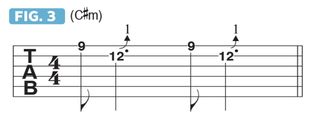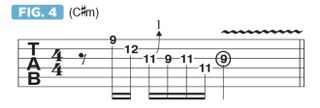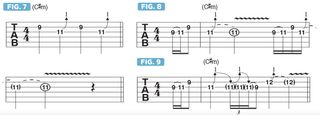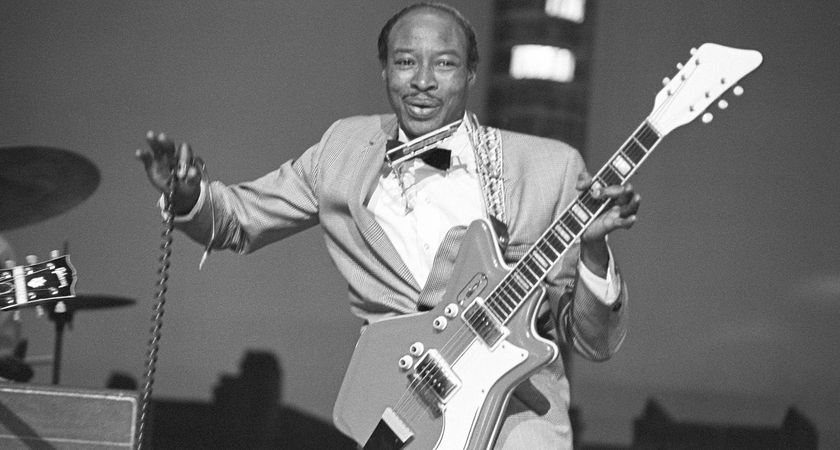Andy Timmons teaches you how to string bend more expressively
Take a breath, stay in control of your string bending and vibrato, and your melodies will sing
This month, I'd like to discuss the beauty, and the importance, of string bending. String bending is truly a huge part of the guitar’s potential to be one of the most expressive instruments. Well-controlled string bending, and string bending with vibrato, will really make your melodies sing.
All examples here relate to the key of C# minor. Figure 1 begins with a 9th-position C#m barre chord, followed by the C# minor pentatonic scale in the same position, in ascending and descending form and with a little bit of scalar improvisation added.

The first bend of focus is a B note, located at the 12th fret on the B string, bent up one whole step to C#. I use my ring finger to fret the note and line up my middle and index fingers behind the ring finger, to add strength to better reinforce and control the bend.
As shown in Figure 2, I first execute the bend, and then I fret an unbent C# note on the high E string’s 9th fret, in order to check the pitch and assure that I’m bending accurately and with proper intonation.

With this bend, I’m trying to find what I call the center of the pitch; as opposed to bending slightly below or slightly above C#, I try to bend up to C# with as pure and accurate intonation as possible. When playing Figure 3, first fret the C# on the high E string, and then bend up one whole step from B to C# with an ear for making that whole-step bend as in-tune with the unbent reference pitch as you can.

There are a few different things going on with the fret hand here: not only am I using my index and middle fingers to assist my ring finger with the bend, I can also feel some tension at the spot where the base of my index finger presses against the bottom of the neck, while additionally wrapping my fret-hand thumb around the top of the neck to provide a solid anchor for the hand overall.

As many guitarists know, Jimi Hendrix had very large hands, and his fret-hand thumb was almost always wrapped around the top of the neck. Figure 4 and 5 offer examples of string bending in Jimi’s style.

Another part of these exercises is that I’d like you to perform these bends with no vibrato. Vibrato can mask how accurate your bending intonation is, so play through these examples without adding any vibrato whatsoever.
Simply bending up a whole step from B to C# will reveal two things: 1) if you are you’re bending in tune, and 2) if you have the strength to hold the bend properly in place. Once you're honed in on that pitch, you can then add some vibrato, as demonstrated in Figure 6.

Let’s move the exercise over to the G string. In Figure 7, I check the note as it sounds on the B string, unbent, and then bend up to it on the G string.
Figure 8 applies this technique to a melodic lick.
Finally, let’s combine the G- and B-string whole-step bends into a single lick, as presented in Figure 9, with a phrase not unlike one of those heard during the outro of the Beatles’ Come Together.

Get The Pick Newsletter
All the latest guitar news, interviews, lessons, reviews, deals and more, direct to your inbox!
Andy Timmons is a world-renowned guitarist known for his work with the Andy Timmons Band, as well as Danger Danger and Simon Phillips.




![Joe Bonamassa [left] wears a deep blue suit and polka-dotted shirt and plays his green refin Strat; the late Irish blues legend Rory Gallagher [right] screams and inflicts some punishment on his heavily worn number one Stratocaster.](https://cdn.mos.cms.futurecdn.net/cw28h7UBcTVfTLs7p7eiLe-840-80.jpg)






